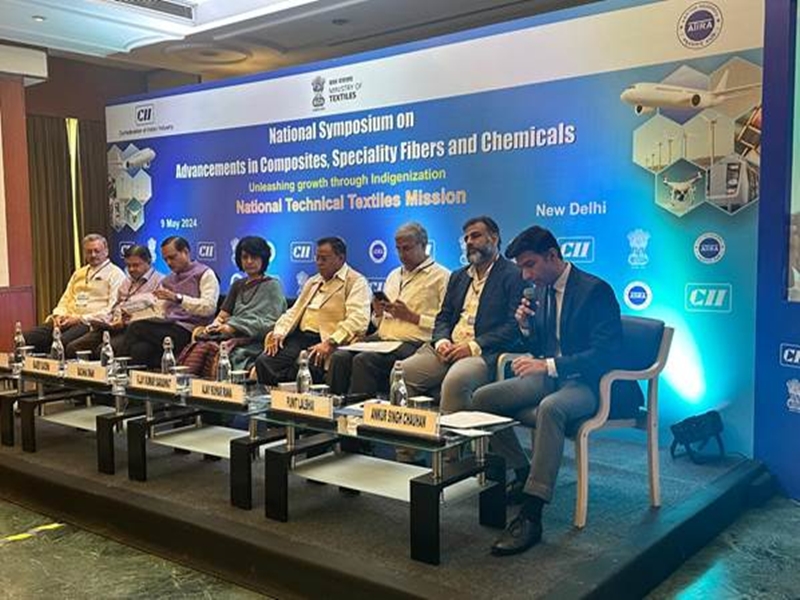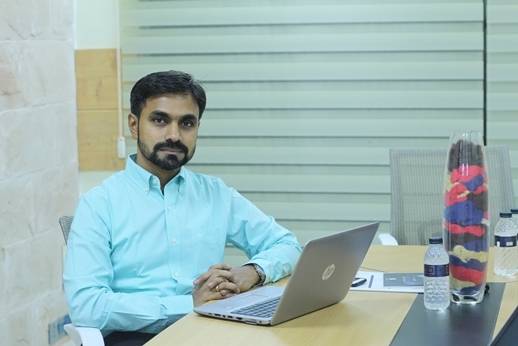The technical textiles industry holds immense potential to drive productivity, efficiency, cost-effectiveness, and innovative solutions across engineering and general applications…reports Asian Lite News
India’s technical textiles market has a huge potential as it is clocking a double-digit growth of 10 per cent and has become the fifth largest in the world, Rachna Shah, Secretary of Ministry of Textiles, said on Thursday.
She said this while addressing a national Symposium on Advancements in Composites, Speciality Fibres and Chemicals organised here by the Ministry of Textiles in partnership with Confederation of Indian Industry (CII) and Ahmedabad Textiles Industries’ Research Associations (ATIRA).
She further said that composites have distinct structural and physical features, which make them suitable for specific applications in infrastructure development, aerospace, automotive sector, defence sector, medical devices and composite materials.
Shah highlighted the importance of institutional buyers, user Ministries and industries in the adoption of technical textiles and products made out of specialty fibres and composites.
A collaborative approach among stakeholders including industry representatives, policymakers, researchers, and investors is imperative to address the cost implications in the field of composites and specialty fibres and work together in increasing awareness and education for wider adoption by the larger community for the growth of the sector, she added.
Vijay Kumar Saraswat, Member, NITI Aayog, highlighted that the specialty fibres are the building blocks of the advanced composites and its choice is a strategic decision on a blend of performance requirements and cost consideration.
He mentioned that specialty fibres like aramids, carbon fibre, zylon, ultra-high molecular weight polyethylene (UHMWPE), glass fibre, ceramic fibre can be tailored for diverse applications and strategic needs, such as fire retardant fabrics, bullet resistant jackets, ropes and cables, windmills (renewable energy) and in gas and chemical filtration, respectively.
He highlighted the top trends in composite materials including high performance resins and adhesives, carbon fibre based materials, light weighting advanced polymer composites, biomaterials, nanocomposites, intelligence design and manufacturing.
He also stressed that the demand for bio-composites is increasing due to growth in its adoption by construction, furniture industry and increased compatibility in medical applications.
Ajay Kumar Rana, Director General, RDSO mentioned the use of geotextiles and geo-composites in the railways sector.
He highlighted the use of geotextiles, geogrids, pre-fabricated vertical drains (PVDs) for load bearing applications, slope erosion protection control application, drainage, separation, filtration, etc.
He also said that the RDSO is actively working in developing new guidelines and standards for use of geo-composites in the railways sector, in association with BIS.

Joint Secretary, Ministry of Textiles Rajeev Saxena said that technical textiles is one of the fastest growing segments with a strong global demand.
The technical textiles industry holds immense potential to drive productivity, efficiency, cost-effectiveness, and innovative solutions across engineering and general applications.
He highlighted that NTTM is a flagship mission with a view to position India as the Global Leader in Technical Textiles.
He elucidated various guidelines under the NTTM mission related to Research & Innovation, Start-up, machinery development, internship, education and skilling.
Nilesh M Desai, Director, Space Applications Centre (SAC/ISRO) said that SAC is the second largest research centre of ISRO with a long association with ATIRA.
He said that space and aerospace is going to be a major area for composites applications, due to its light weight and durable properties.
CFRP and Asto glass fibres are majorly used nowadays in space and aerospace sector.
Around 150 participants attended the conference including officials and representatives from Central Ministries, user Departments of Central and State Governments, industry leaders, scientific experts, researchers, and professionals related to technical textiles.
ALSO READ: How India Plans to Outpace China?









